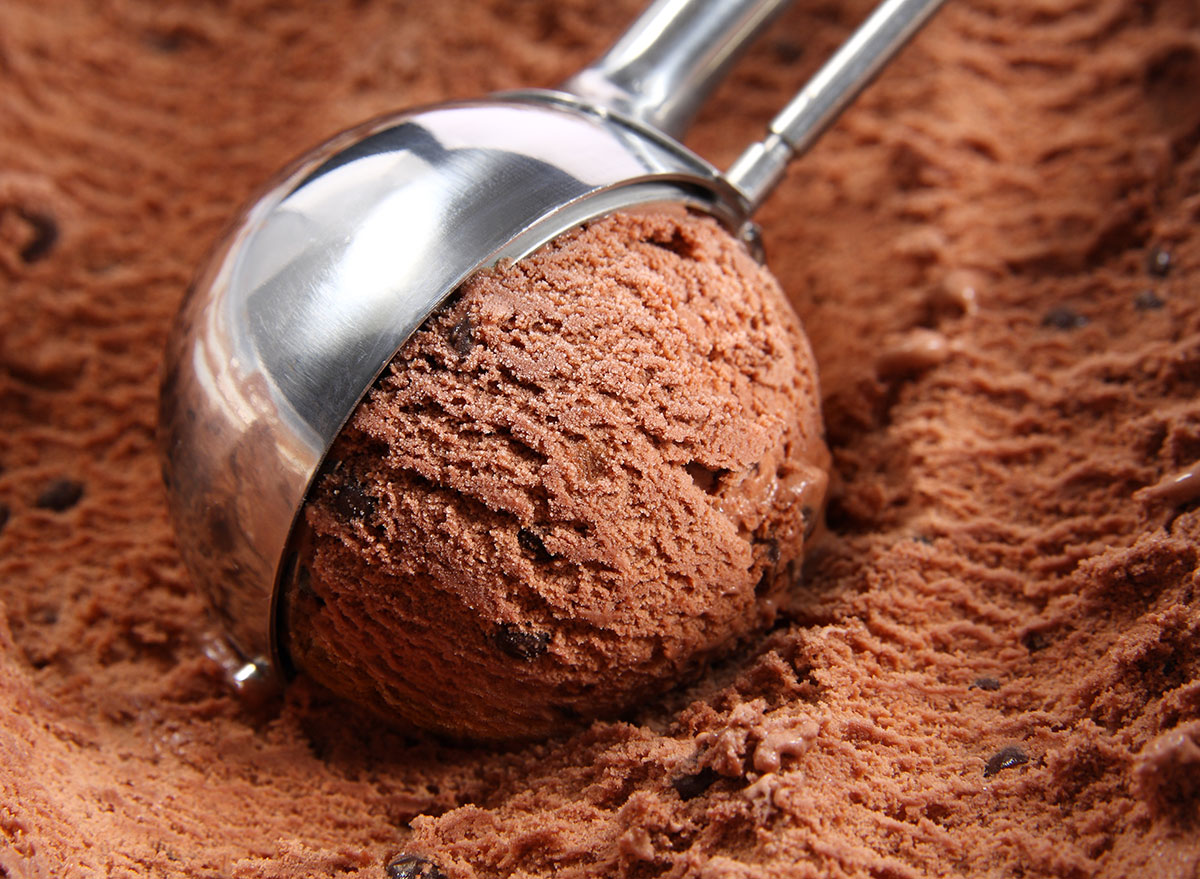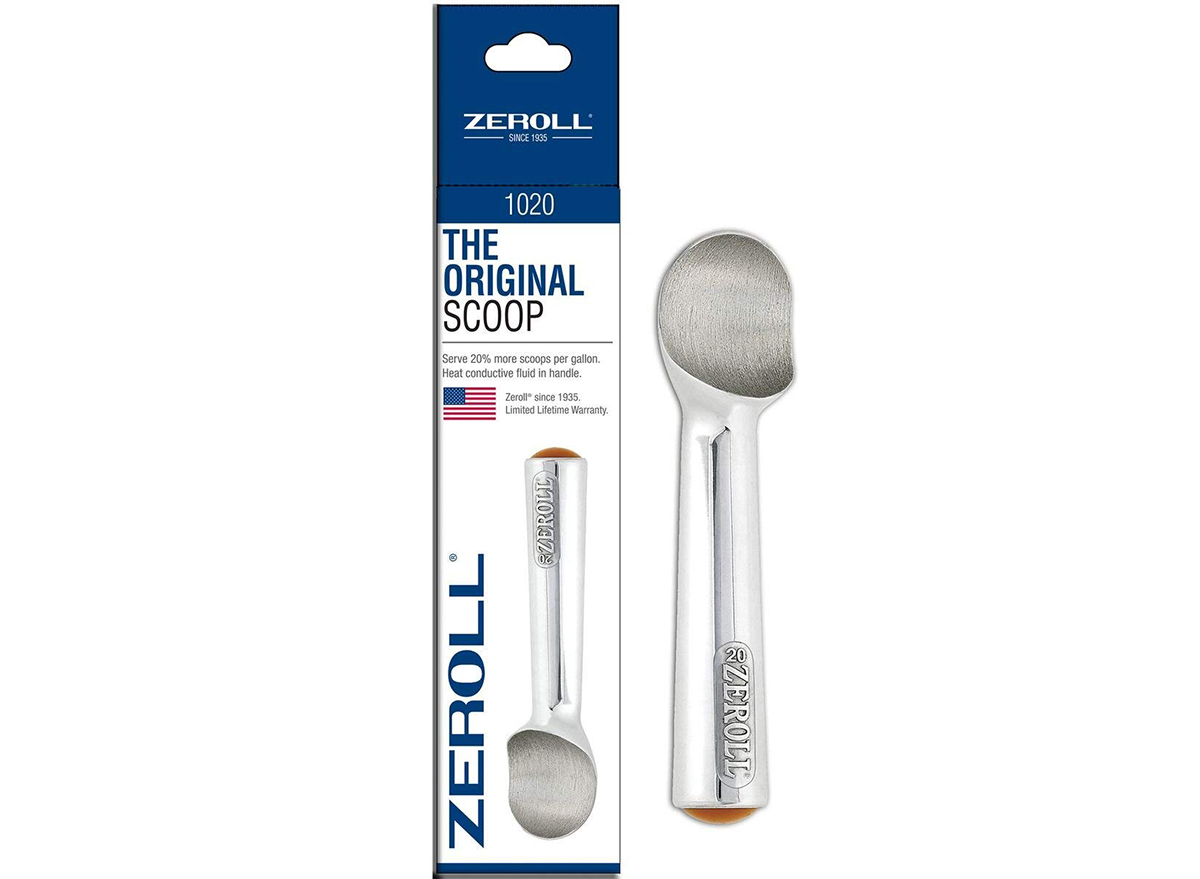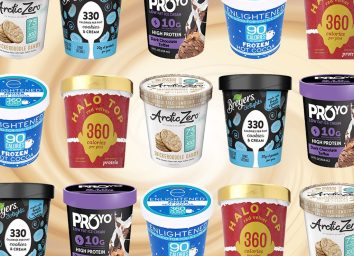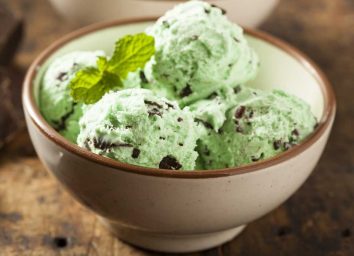The Worst Mistake You're Making When Scooping Ice Cream

When you make a trip to a specialty ice cream store, you can expect to walk out with a perfectly sculpted scoop (or two) of luscious ice cream. It's challenging to emulate that scoop in the comforts of your own home with a carton of Ben & Jerry's, though—especially when you've heard there are so many different techniques. Chill the scooper, no heat it, no wait—dip it in water first! We were curious as to how you accomplish the perfect ice cream scoop, which is why we reached out to a famed expert.
Jeni Britton Bauer, founder of Jeni's Splendid Ice Creams and author of the James Beard Award-winning cookbook Jeni's Splendid Ice Creams at Home, gave us the scoop on how to, well, get the perfect ice cream scoop!
And for more tips and tricks, sign up for our newsletter to get daily recipes and food news in your inbox!
What is the best way to get the perfect scoop of ice cream?
Bauer explains that there are two common mistakes most people make when they're trying to scoop out the perfect amount of ice cream: not waiting for the pint of ice cream to be the right temperature and fiddling with the temperature of the ice cream scooping utensil.
"The first [trick] is that, depending on how cold your freezer is, you may need to give your ice cream time to warm up before scooping," says Bauer. The ice cream connoisseur likes to let the ice cream sit out on the counter between five and 10 minutes, or just until the sides aren't as rock-solid anymore, allowing for a gentle squeeze.
"The second [trick] is to always use a dry, room-temperature ice cream scoop. It will melt just a little bit of the ice cream as you run it over the surface, giving the scoop enough slide," she says.
Is there a wrong way to scoop ice cream? What happens to the ice cream if you do it this way?
"Yes. Never wet your scooper, especially with hot water," says Bauer. "A dry, room-temperature scooper is always the way to go. Using a wet scoop glazes ice cream with a thin layer of ice—and hot water will melt ice cream too much, causing ice crystals to form faster when you return the pint to your freezer."
You could potentially ruin the smooth consistency of the ice cream that's left in the container if you dip the scooper in water before plunging into the freshly opened ice cream. To better preserve the creamy stuff (so that you can keep getting those perfect scoops), you're better off using a scooper that hasn't been dipped in water or isn't chilled or heated.
Does the kind of ice cream scoop you use matter?
"Nothing beats a Zeroll scoop," says Bauer. "The handle is filled with a liquid that transfers heat from your hand to the aluminum scoop, which melts just a little bit of ice cream as you run it over the surface and cleanly releases the ice cream from the metal."
This is the type of scoop that's used in Jeni's Splendid Ice Cream shops across the country. Bauer even says that a disher—which is likely what first comes to mind when you think of a traditional scoop with its lever and spring—doesn't yield as perfect a result.

What's the best way to store leftover ice cream?
"Ideally, you'll serve and eat ice cream while it's quite firm but pliable. Once you've scooped it, return any remaining ice cream to the freezer, because if it melts too much at room temperature, refreezing will result in an ice cream that is too icy," says Bauer.
She also suggests covering the top of the ice cream pint with either a piece of parchment or wax paper to help delay the inevitable formation of ice crystals. Now that you know the secret to how a renowned shop serves up perfectly round scoops of ice cream, it's time to see if you can dish out the perfect scoop yourself!
And for more tricks, don't miss these 52 Life-Changing Kitchen Hacks That'll Make You Enjoy Cooking Again.








